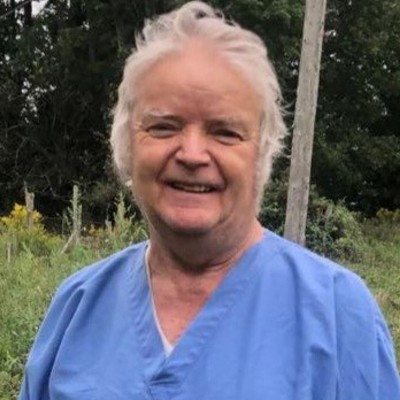In Vermont, each of the state's 13 counties maintains its own Local Emergency Planning Committee (LEPC), whose members might be called the masters of disaster.
While average Vermonters go about our daily business of mowing the lawn, spreading mulch and getting our Netflix envelopes mailed on time so we don't miss the next installment of Mad Men, the good folks on the LEPC are envisioning and planning for fires, ice storms, anthrax attacks and a partial meltdown at Vermont Yankee.
Each month, Chittenden County's LEPC holds a meeting that is open to the public. Most of the time they're relatively routine affairs: free coffee and donuts, a PowerPoint presentation and the periodic update on who's holding the next CPR refresher course or buying a new haz mat trailer.
However, with hundred of homes on Lake Champlain under water this week, today seemed like a good time to pop in on our LEPC members and get a read on how they're faring.
A couple of interesting tidbits gleaned from this morning's meeting: Only about 18 percent of Vermont homes are covered by flood insurance. And, of all the dairy farms in Vermont, between 80 and 90 percent of them have NO backup power source whatsoever. Why is this important? Try milking 200 heifers by hand that are usually hooked up to a milking machine.
Obviously, the most common disaster scenario the LEPC plans for are spring floods, so this month's water-world event didn't exactly take them by surprise.
Still, as one LEPC member pointed out this morning, when state emergency planners put out a notice last fall that some 40,000 sandbags were available for free to any municipalities that wanted them, only one person showed up to claim any —and reportedly, he wanted them to fill up his daughter's sandbox. Don't expect that scenario to repeat itself next fall.
Nevertheless, if Vermont's disaster planners are good at anything, it's at learning from their own mistakes. Following the meeting, I sat down with Randy Bronson, program manager for the hazardous materials compliance office within Vermont Emergency Management in Waterbury to find out what lessons, if any, were gleaned from this incident.
Photos courtesy of the Governor's Office.
SEVEN DAYS: At this morning's meeting, we heard a presentation from the Vermont National Guard's Maj. Randall Gates on all the disaster-related services they can provide. Why isn't the National Guard playing a bigger role in this flood event?
RANDY BRONSON: Well, if requests aren't coming into our office from some of the missions they can provide, we don't activate them. They had a specific mission last week. We requested vehicle support for Isle La Motte, because Isle La Motte requested it. Sandbagging assistance, that came in. It really depends upon what is requested.
SD: Was there anything especially surprising or unexpected about this flood?
RB: Well, number one, the individual homeowner should be prepared for any flooding event. And then, the town should also look at what type of resources they have in case an event happens. It's very clear we've had a lot of water and a lot of runoff. We're fortunate now. But with Vermont the way it is, a lot of people live in low-lying areas and what traditionally used to be floodplains, [homes] are encroaching on some of these areas. In natural conditions, the river comes up and spreads out over fields.
SD: Do you think this event will precipitate a discussion of where homes should be allowed to be built?
RB: I think any planning within town government should take a look at where any property gets built, whether it's industrial property or residential or a camp. One thing we're seeing is that a lot of homeowners don't have flood insurance. Traditionally, when an event like this happens, people take a look at their insurance policy and realize it's not covered.
SD: As this event has unfolded, have you identified shortcomings or areas that need to be improved in the planning and response process?
RB: I think the key thing is that the towns know what resources are available to them when an event happens when they've exhausted everything they have. The rapid response plans and the basic emergency operations plans have some key things: Who do you contact? Well, the Emergency Management Office, we're just a piece of the state emergency operations center. So we provide the administrative arm to help these communities. So, it's important that they know when they've exhausted everything, what do they do, who do they call, because we can marshal a lot of state assets that come in and provide guidance and planning. When the governor declares a state of emergency, it opens up a lot of...resources. And, residents should always notify their town government that they've sustained damage, because we really look to the town government to be the focal point within their communities, to have a handle and understanding of what's happening in their own communities.
SD: Is this the kind of event that prompted a 24/7 incident command setup?
RB: We have a 24/7 duty officer who is on 365 days a year. So, we're there to take a call anytime of the day or night, whether it's a hazardous materials call, a flooding event or a business is on fire in a downtown community. But with a flooding event [of this size], it goes from a level one, which is a duty officer, to potentially a level two, which is increased staff and limited state support functions, to potentially a level three or four, which is when we bring in federal assets. Then our state emergency operations center becomes a 24-hour operation.
SD: Part of your job is dealing with haz mat compliance. Were there any haz mat incidents that arose during this flood?
RB: Typical events. Some of the camps on the lake had propane tanks that were floating away. Some people also had oil tanks at their camps that tipped, so we had petroleum-based spills.
SD: What lessons were learned from this event?
RB: I think the lessons learned start at the lowest level. You have to be prepared for any disaster. The unfortunate thing is that you have no control over Mother Nature and its ability. It's hard to prepare for a flooding event like this. If you take a look at what we're going through compared to what's going on in the Midwest, how could we possibly be prepared for a situation like what they're going through? You do the best you can. But I think we understand floods. It's the primary disaster we have here, year in and year out, and we can manage them very well. Usually, they're more localized. This time, it's the entire extent of Lake Champlain, on both sides.
For more info on what communities and individuals should be doing now to recover from the flood, check out this link from Vermont Emergency Management, which includes daily updates on road closures, flood tips and resources, Vermont river gauges and reports from the National Weather Service.




Comments
Showing 1-1 of 1
Comments are closed.
From 2014-2020, Seven Days allowed readers to comment on all stories posted on our website. While we've appreciated the suggestions and insights, right now Seven Days is prioritizing our core mission — producing high-quality, responsible local journalism — over moderating online debates between readers.
To criticize, correct or praise our reporting, please send us a letter to the editor or send us a tip. We’ll check it out and report the results.
Online comments may return when we have better tech tools for managing them. Thanks for reading.